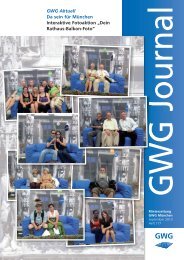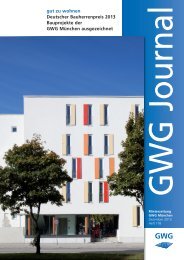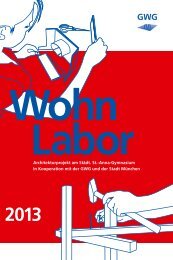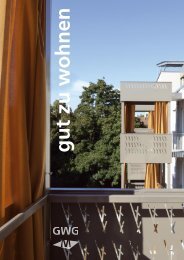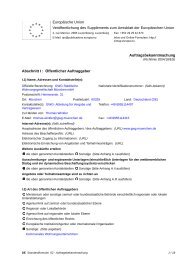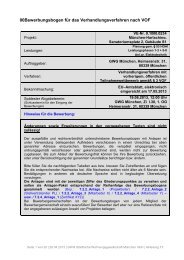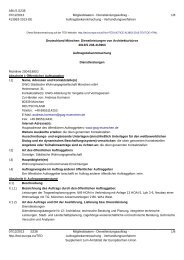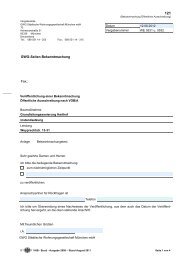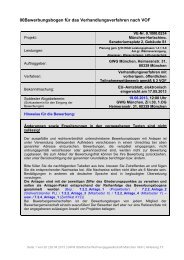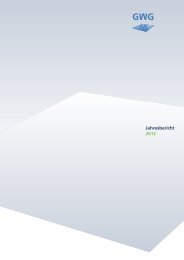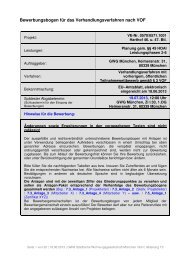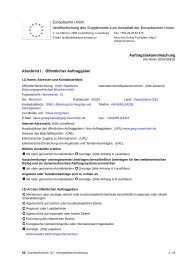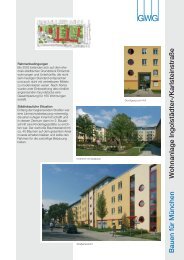New build - GWG München
New build - GWG München
New build - GWG München
Create successful ePaper yourself
Turn your PDF publications into a flip-book with our unique Google optimized e-Paper software.
From hostels to a workers’ neighbourhood<br />
to an urban oasis<br />
Those searching for stories of Munich's<br />
past should look no further than places<br />
like Schwabing and Bogenhausen, or<br />
Sendling and Nymphenburg. But the Au,<br />
located in the heart of the Bavarian state<br />
capital, is in many ways the opposite of<br />
the gleaming city propagated by the<br />
likes of Thomas Mann: the flood plain of<br />
the Isar, tradesmen’s quarter and working<br />
class district. It may have something<br />
to do with the poverty of the neighbourhood<br />
that Lena Christ masterfully yet<br />
harrowingly described in her “Rumpelhanni”.<br />
Or it may be because the Au<br />
has always lived with change, with mass<br />
migration. Its history embodies the<br />
constant rise of a quarter from a hostel<br />
district to a working class neighbourhood<br />
to an oasis in the middle of the<br />
city.<br />
In his “History of the City of Munich”,<br />
published in 1796, Joseph Burgholzer<br />
described the location on the river that<br />
was regularly plagued with floods as a<br />
bustling place: “in that very place,<br />
houses are built or raised every year.”<br />
The Au was not suitable for agriculture<br />
and was therefore a place for the working<br />
population even before industrialisation.<br />
As Burgholzer wrote, “in the<br />
evenings, on the way home, it is as if the<br />
whole Au had been in the city.” The<br />
bourgeois Munich was on the other side<br />
of the Isar. But here, on the right bank<br />
of the river, lived millers and fishermen,<br />
and all the day labourers, messenger<br />
boys and workers without whom the<br />
“city” would not have been able to<br />
function. The Au was always the<br />
“other” Munich, a satellite whose independence<br />
took a whole generation to<br />
achieve. It was bestowed city rights in<br />
1818 while another 36 years later it<br />
finally became a part of Munich itself.<br />
In the mid-eighteenth century, the already<br />
heavily populated Au began to<br />
grow in density, particularly around the<br />
Lilienstrasse, the old country road leading<br />
to Tölz, and the Isar bridge. The very<br />
low-price accommodation comprised a<br />
single house shared by several tenants, a<br />
Site map “The Au 1858” (top)<br />
Overview map of Munich from<br />
1760 (bottom)<br />
101



